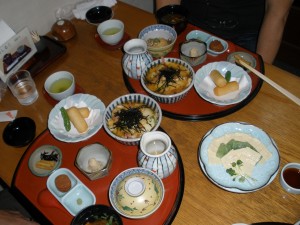Growing up with a Japanese background, fermented foods were always served on our table. From a small child, I have always been a fan of natto ,fermented soy beans (but to some it can be an acquired taste). When I would stay with my aunt in Mie prefecture, Japan, I remember watching her cutting up different vegetables and mixing together all the ingredients for tsukimono (pickled vegetables). This dish was brought out at every meal providing a delicious layer.
Japanese people have a long history of eating tsukimono, it was invented long before there was refrigeration. The techniques in making it can be quite simple by salting, vinegar brining or fermentation. The vegetables are loaded with essential vitamins (A and C) and are a good source of fibre, potassium and calcium. These fermented vegetables are loaded with healthy probiotics which help maintain a healthy gut and intestinal flora. Other benefits are, increased metabolism and a healthy balance of alkaline and acidity in the stomach. The other benefit is that it doesn’t need to be heated, so the enzymes are still in tact and helpful for overall digestion.
fermentation. The vegetables are loaded with essential vitamins (A and C) and are a good source of fibre, potassium and calcium. These fermented vegetables are loaded with healthy probiotics which help maintain a healthy gut and intestinal flora. Other benefits are, increased metabolism and a healthy balance of alkaline and acidity in the stomach. The other benefit is that it doesn’t need to be heated, so the enzymes are still in tact and helpful for overall digestion.
Can you get any better than that? Try making your own tsukimono with your favourite vegetables or buy it at your local asian food store.
For more information this is a great book : Quick and Easy Tsukiomo : Japanese Pickling Recipes Ikuko Hisamatsu